
ZigOpinion: Why Flex Fuel Is The Next Step In The Future
- Oct 5, 2022
- Views : 5309

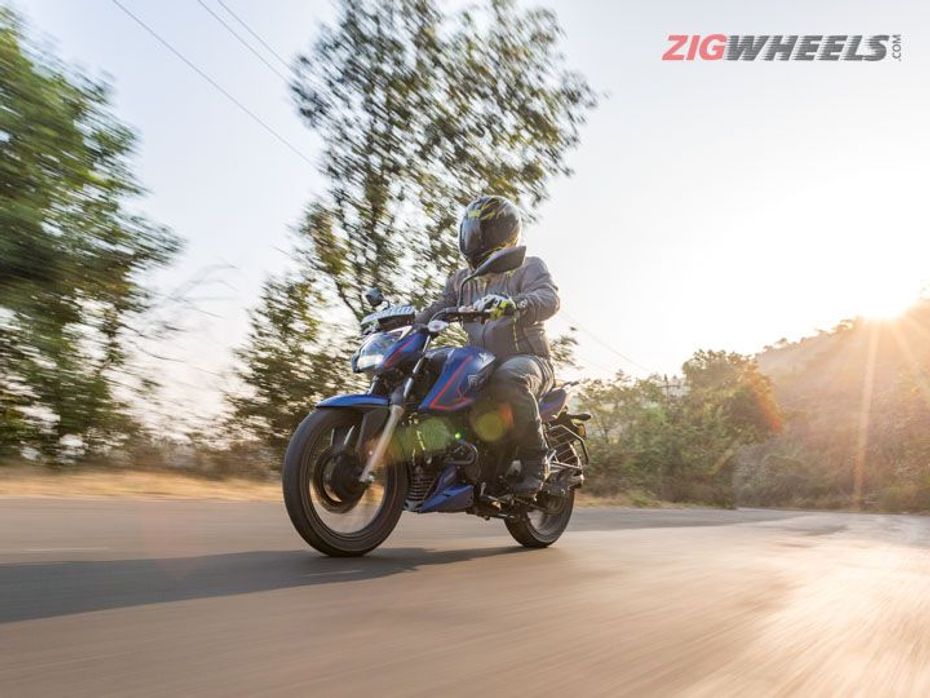
Performance motorcycling doesn’t get more accessible than the TVS Apache series. The bikes adhere to the mantra ‘Win on Sunday, Sell on Monday’, and no one epitomises this better than its flagship naked -- the RTR 200 4V. It has consistently been a thrilling motorcycle to ride, converting every commute into an event. No wonder then that TVS chose to commemorate the occasion of four million sales of the Apache series with an updated version of the RTR 200 4V. The bike has received five updates, six if you count the new colour scheme borrowed from its one-make championship series racer. Let’s delve into the updates and understand what impact they have had on the RTR 200 4V.
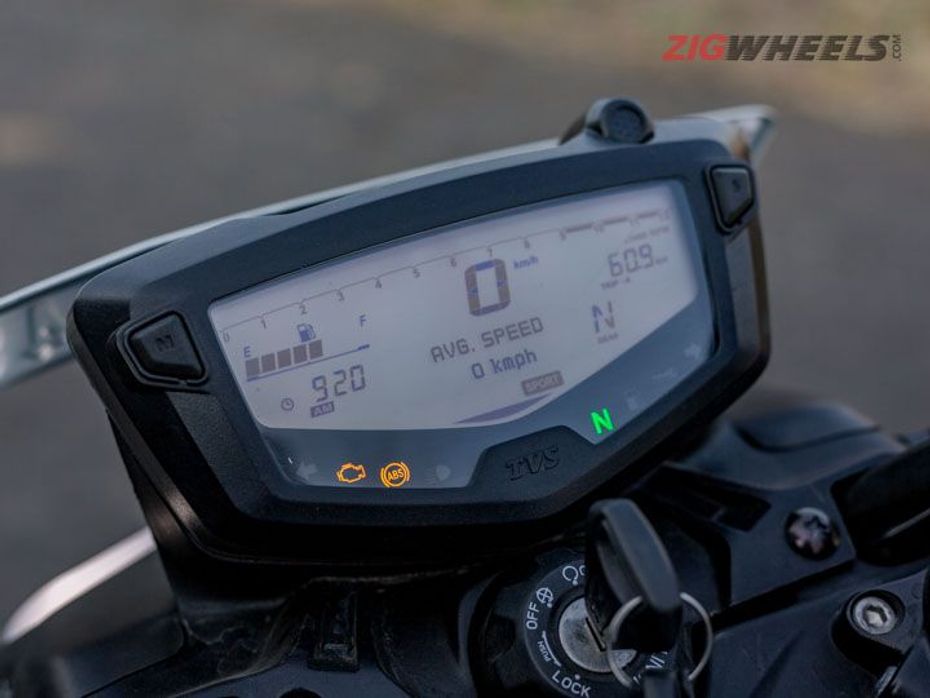
UPDATE 1 - RIDING MODES
Does a 20-odd PS bike really need riding modes?
It is surprising that TVS managed to provide riding modes on the RTR 200 4V without actually offering ride by wire. It is a more rudimentary setup though. The small ‘mode’ button on the right-hand side allows you to toggle between two engine modes and three ABS intervention levels that are packaged into three riding modes.
| Mode | Engine Map | ABS |
| Rain | Reduced engine performance | Max Intervention |
| Urban | Reduced engine performance | Medium Intervention |
| Sport | Full engine performance | Minimal Intervention |
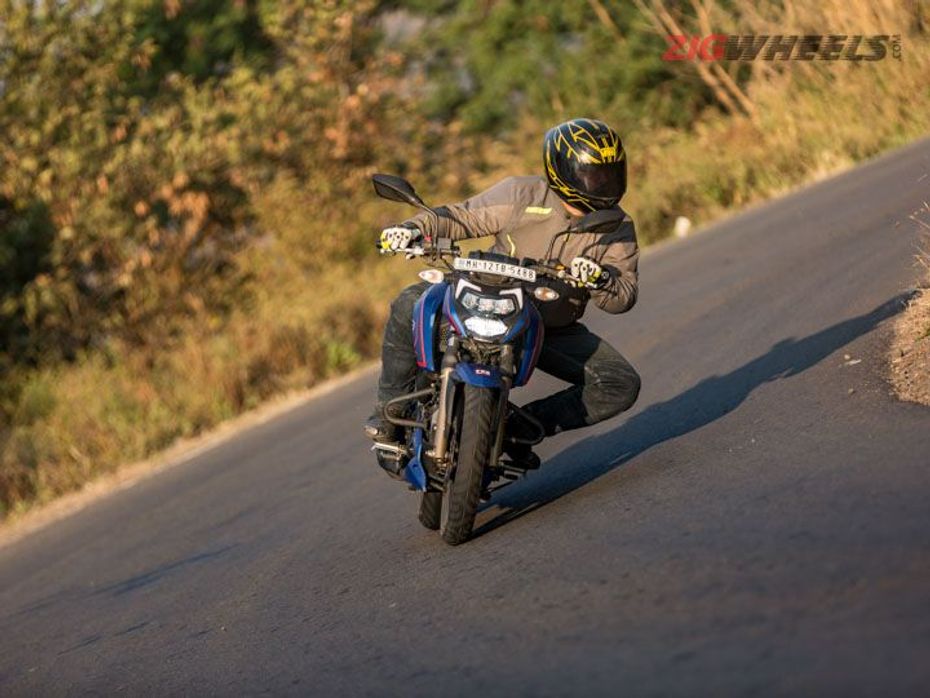
In the first two modes, the engine has a milder demeanour with ABS sensitivity decreasing from Rain to Urban. But with Sport, you get minimal ABS intervention and the 197.75cc motor is able to unleash its full... 20.82PS. Yeah, so you might ask: does a bike that makes just 20-odd PS need a softer engine map? The answer, according to TVS, is YES. Because newbies or riders looking for a calmer commuting experience, the ‘Rain’ and ‘Urban’ modes make far better sense, allowing them to churn out better fuel efficiency, with ABS casting a larger safety net.
But we feel most riders would just get bored of the subdued throttle response rather quickly. Which is why, we think, most buyers will stick to the ‘Sport’ mode, as that’s where all the fun of this RTR 200 lies.
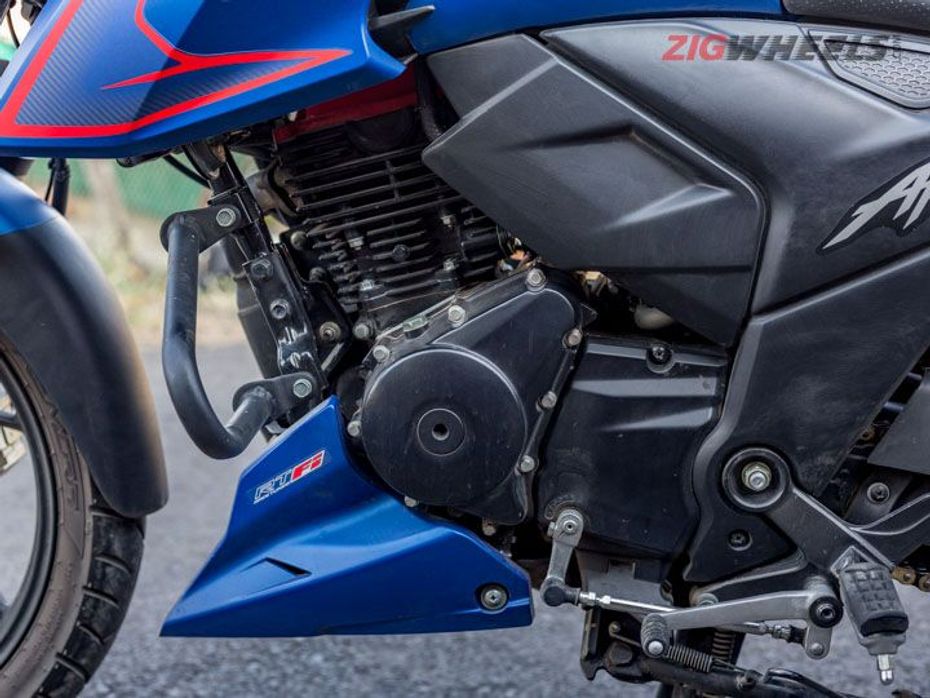
UPDATE 2 - ENGINE OUTPUT
How does more power affect performance and fuel efficiency?
| 2021 Apache RTR 200 4V BS6 | 2020 Apache RTR 200 4V BS6 | Apache RTR 200 4V BS4 | |
| Engine Specs | 197.75cc single-cylinder, air-cooled (w/oil-cooler), fuel-injected, 4-valve | 197.75cc single-cylinder, air-cooled (w/oil-cooler), fuel-injected, 4-valve | 197.75cc single-cylinder, air-cooled (w/oil-cooler), carburetted, 4-valve |
| Power |
Sport : 20.82PS at 9,000rpm Urban/ Rain : 17.32PS at 7,800rpm |
20.5PS at 8,500rpm | 20.5PS at 8,500rpm |
| Torque |
Sport : 17.25Nm at 7,250rpm Urban/ Rain : 16.51Nm at 5,750rpm |
16.8Nm at 7,500rpm | 18.1Nm at 7,000rpm |
| Gearbox | 5-speed | 5-speed | 5-speed |
| Kerb Weight | 152kg | 153kg | 151kg |
TVS engineers have tried to gain back whatever performance the 197.75cc motor lost in the transition to BS6 emission norms. In the process, they have also managed to eke out a bit more power from the mill, making it the most powerful iteration of the engine yet. The RTR 200 is also a kilo lighter than the older BS6 bike.
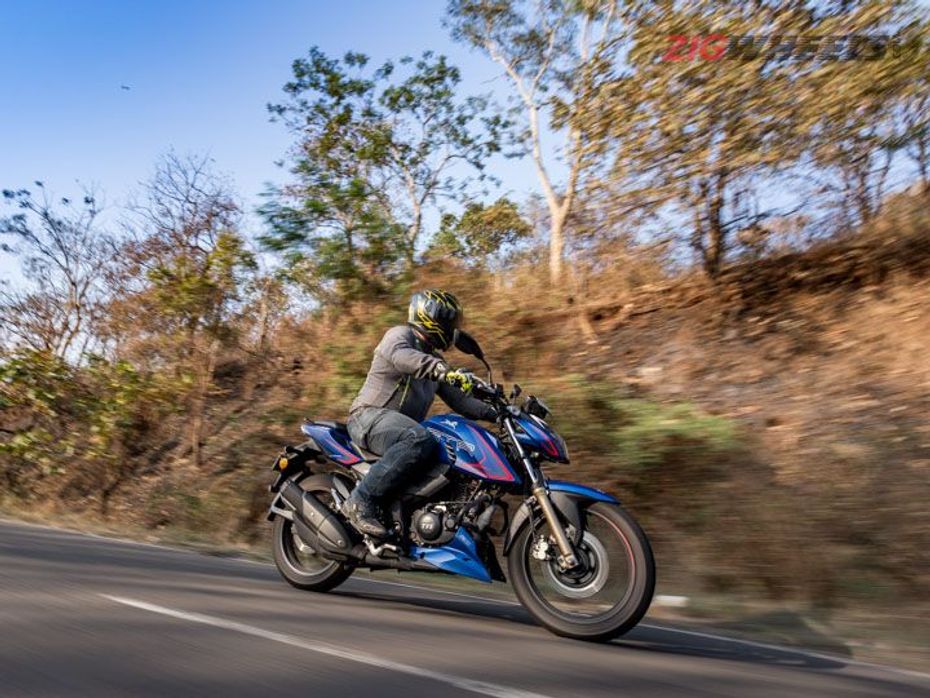
|
Acceleration |
2021 Apache RTR 200 4V BS6 |
2020 Apache RTR 200 4V BS6 |
Apache RTR 200 4V BS4 |
|
0-60kmph |
4.37s |
4.52s |
4.53s |
|
0-100kmph |
12.23s |
13.93s |
13.29s |
|
30-70kmph in 3rd gear |
5.57s |
5.48s |
5.8s |
|
40-80kmph in 4th |
7.34s |
7.89s |
7.6s |
The difference in performance is evident as the RTR 200 4V rockets up to 100kmph nearly a second quicker than the BS4 bike, which is highly rewarding. This is possible due to the new linear engine map of the ‘Sport’ mode that lends stronger bottom-end performance with respectable top-end drive as well. The chunk of the drive is still present in the mid-range, between 5000rpm and 8000rpm. There is a negligible drop in third gear roll-on acceleration. But thanks to the flatter torque curve, the strong torque surge helps the bike gather momentum rapidly in fourth gear.

And it has become a lot smoother too. You notice there are fewer vibrations across the rev range with the buzziness only becoming a bother post 8,500rpm. The motor’s sweet spot remains 85-90kmph, the engine sounding a bit stressed 95kmph onwards. By curbing your exuberance, you will be able to churn out decent highway fuel efficiency of 49.80kmpl. Even in the city, the motor is pretty frugal, delivering 47.61kmpl.
The RTR 200 always had a nice enticing exhaust note, but due to the BS6 emissions norms, it had to be muffled a bit. This new note still doesn’t sound as loud as it did in BS4 times, but there is now a nice racy rumble to accompany your ride.
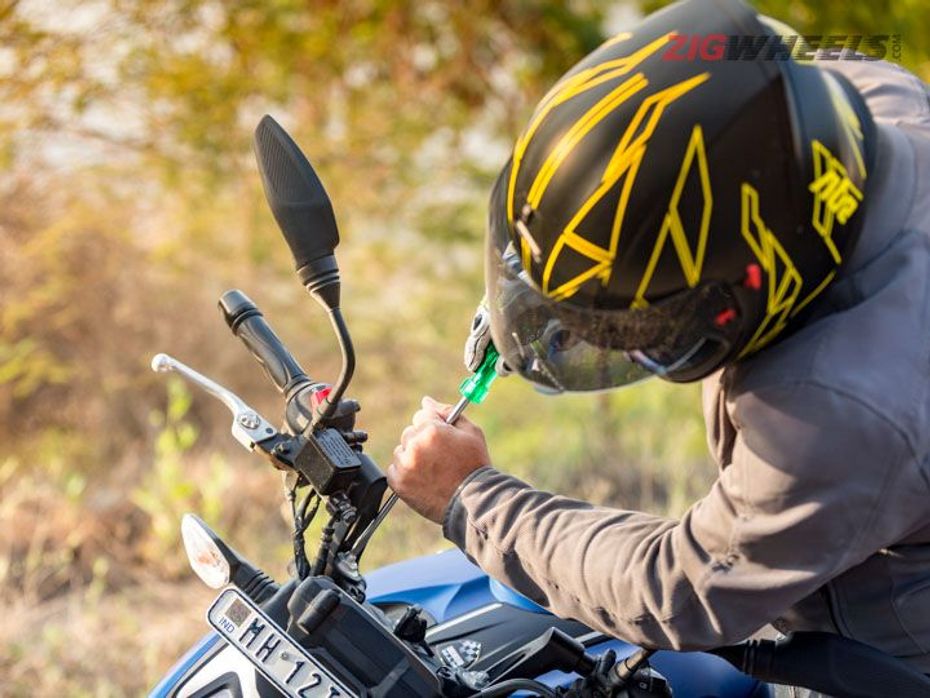
UPDATE 3 - ADJUSTABLE FRONT SUSPENSION
Do you actually need preload adjustability?
We are quite happy to see big-bike technology seeping into smaller-capacity motorcycles, as the RTR 200 4V becomes the most affordable bike in the country to get some form of adjustability for the front fork. It is still a conventional fork, and not an upside-down one. But just like the monoshock, it too is made by Showa.
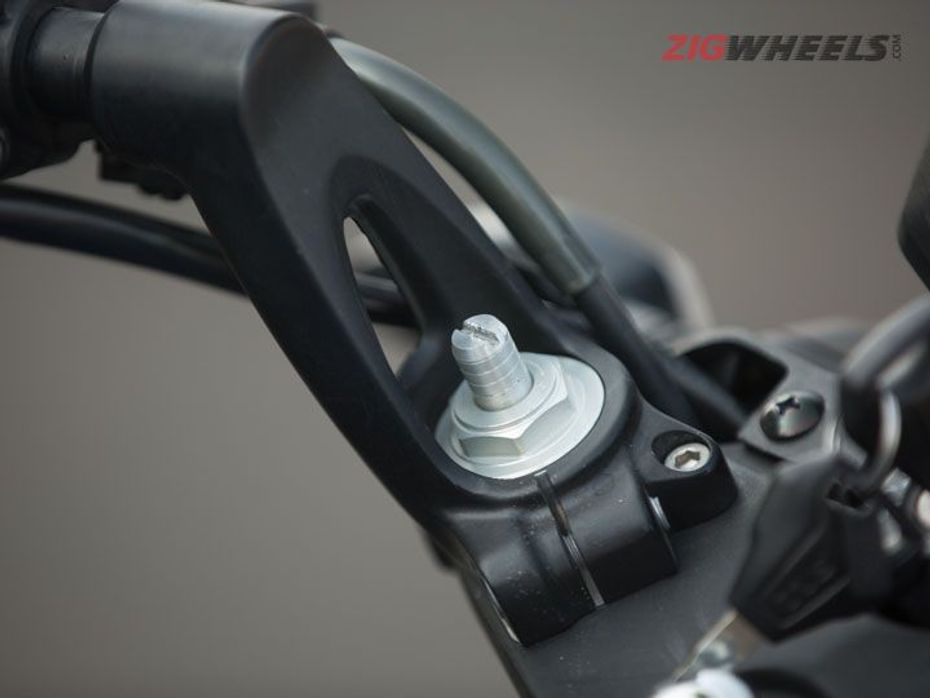
It is commendable that TVS was able to provide adjustable suspension in such a segment where even big bike manufacturers like Triumph and KTM are shying away from offering it on machines like the Trident 660 and 890 Duke. This adds that extra bit of sophistication to the RTR’s package, allowing riders of varying weight and riding styles to set the bike up, albeit to a certain extent, according to their needs.
What preload really does is alter the weight, or load, is applied on the spring before you actually sit on it. Contrary to what most people think, preload doesn’t exactly change the ride quality of your bike. Instead, it changes your suspension’s working range, and consequently, the steering geometry.
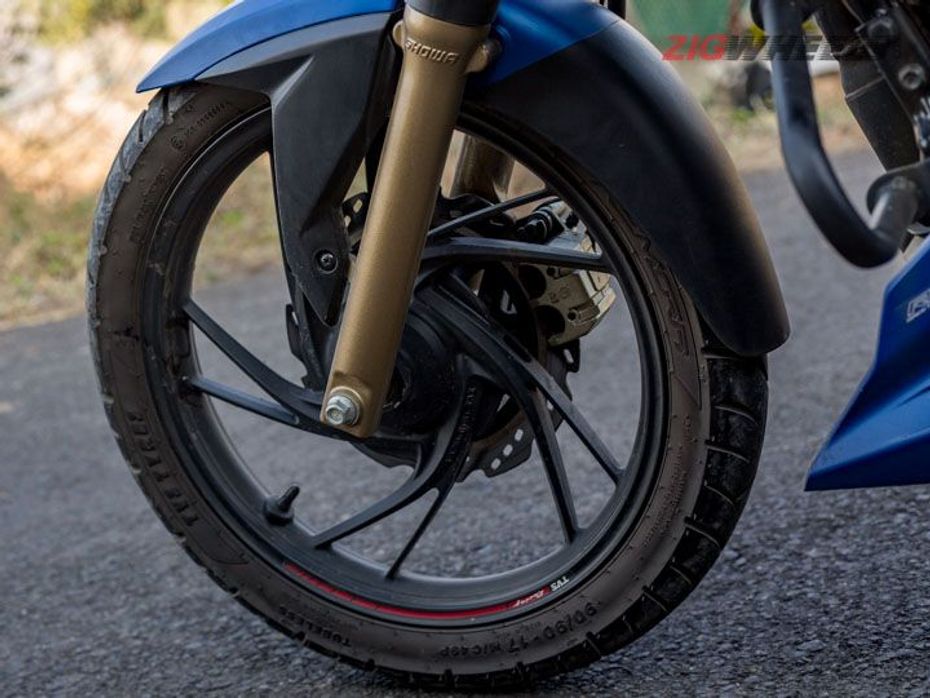
TVS says that this suspension adjustability helps you tailor the front suspension to your needs (that is, if you weigh between 65kg and 80kg). Even if that feels like a somewhat narrow range, this level of customisation has been impossible till now in this segment. Of course, if you are lighter or heavier than the specified weight range, or have a pillion/luggage on board, the adjustment will not be as effective. However, it will still work well to a certain degree. What we ultimately found was that for a 75kg rider (weight inclusive of riding gear), the second notch on the adjustment tab from softest provided a wholesome riding experience. It managed to keep the fork in its optimum working range to soak harsh bumps without compromising on the Apache’s great handling reputation.
We will be doing a separate story on how to go about setting up the front suspension for your weight, and what happens if you tune it improperly. So stay tuned to ZigWheels.com.
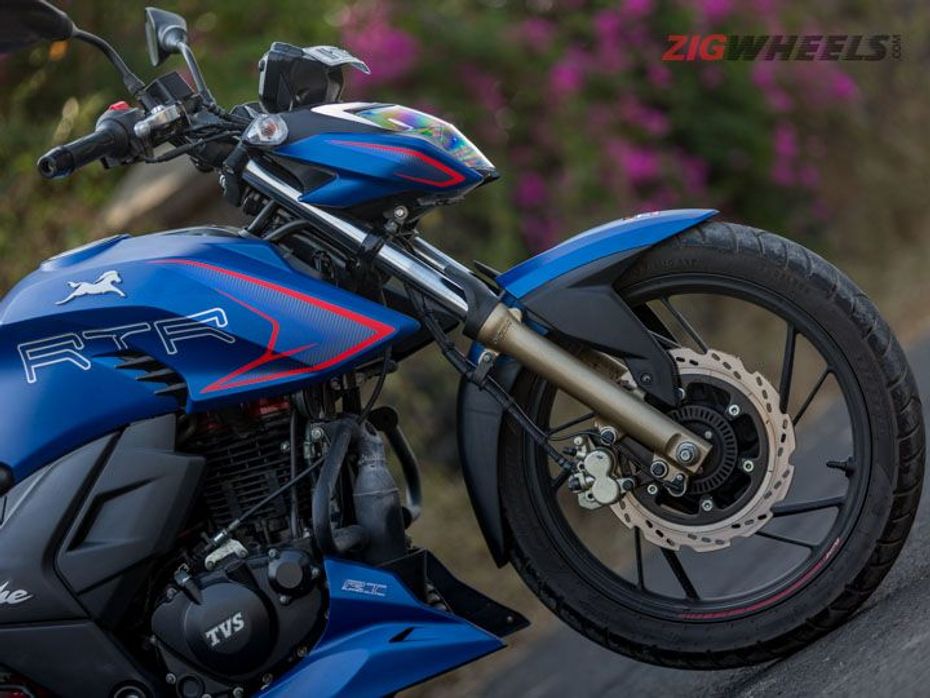
UPDATE 4 - BRAKES
Huh? This isn’t mentioned in the brochure…
|
Braking |
2021 Apache RTR 200 4V BS6 |
2020 Apache RTR 200 4V BS6 |
Apache RTR 200 4V BS4 |
|
80-0kmph |
29.46m |
32.04m |
37.61m |
|
60-0kmph |
16m |
17.60m |
21.09m |
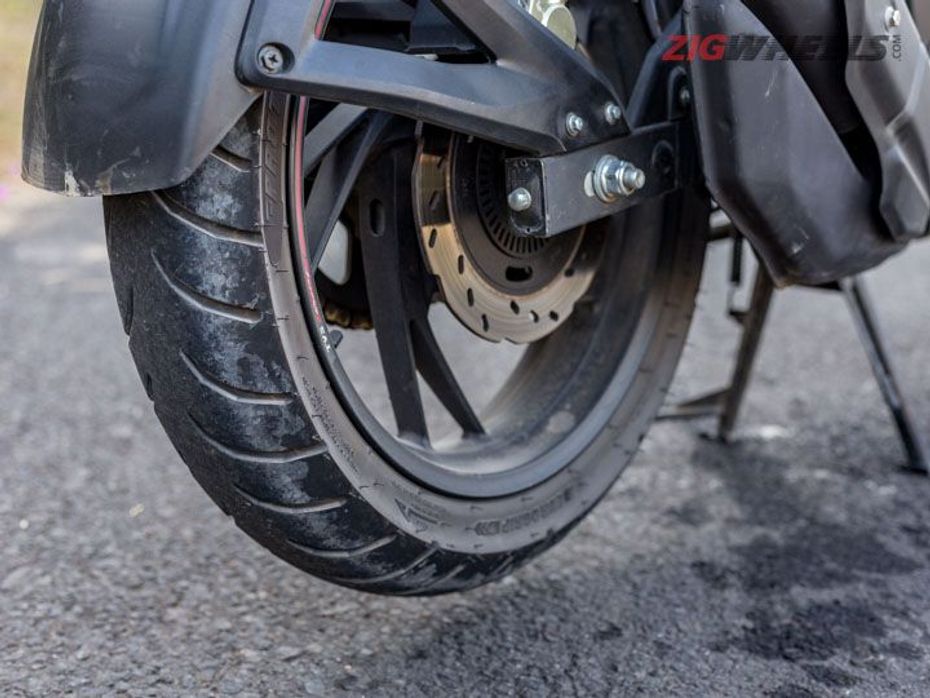
Ever the Achilles’ heel of the RTR 200, the brakes have now received a much-needed shot in the arm. Exact changes in hardware haven’t been revealed yet. However, just by taking a look at the table above, you know how sure-footed the 2021 RTR 200 4V will remain in hard braking situations. In fact, from 80kmph, the RTR 200 now stops 2m shorter than even the Apache RR 310, a motorcycle that has a larger front rotor, a radial brake calliper, and grippier tyres.
And there’s more praise for the brakes. There’s finally the much-needed brake feel and feedback at the levers. Braking progression is linear and predictable. ABS calibration in ‘Sport’ mode is lenient and consistent, something that experienced riders will appreciate. And even for the novices, the least-intervening ABS setting will not be scary either.
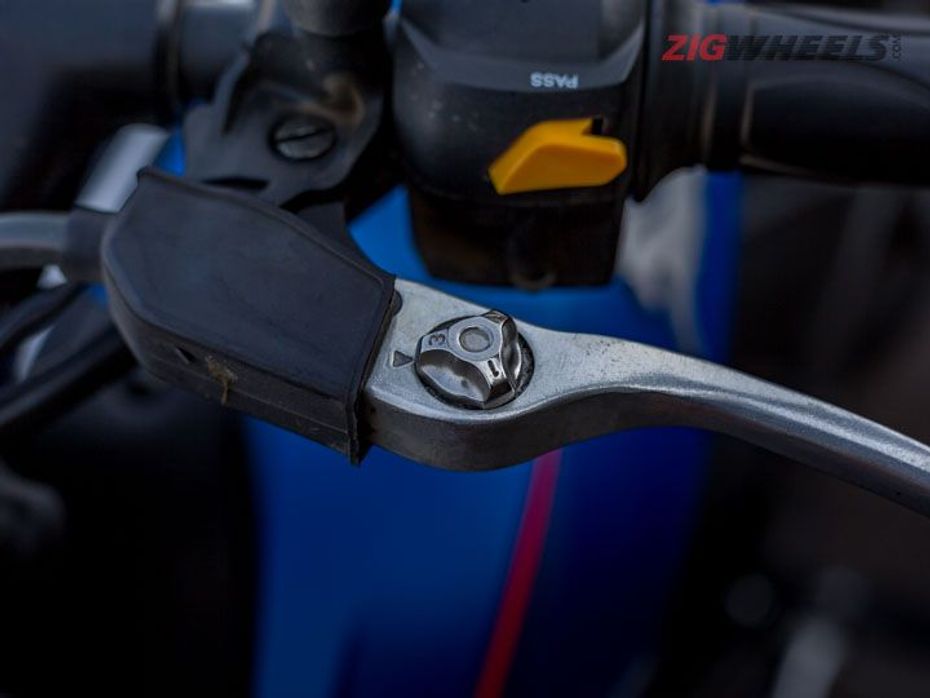
UPDATE 5 - SPAN-ADJUSTABLE LEVERS
Boon or frivolous?
Adding to the list of new features on the 2021 RTR 200 4V are the span-adjustable hand levers. Again, this is a segment-first, the most affordable bike in the country to have this aid. This adjustability goes a step further in personalising the RTR 200 to the rider’s needs.
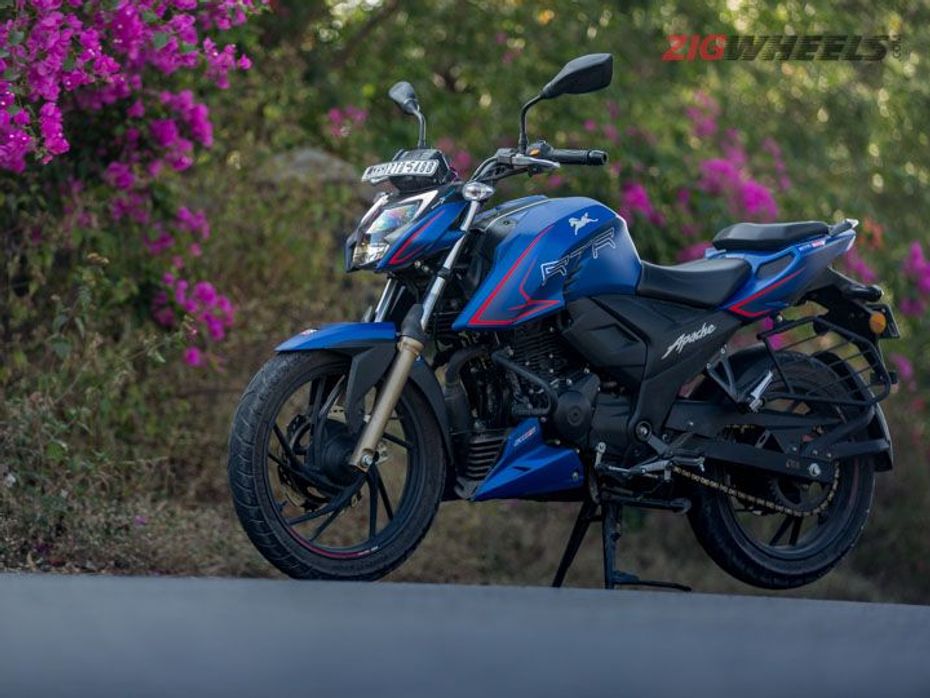
Best In The Business?
At just Rs 3,000 more than the outgoing model, these updates barely inflict any damage on your wallet. And that’s what makes the 2021 TVS Apache RTR 200 4V that much sweeter. The fact that you are getting big-bike adjustability at just Rs 1.33 lakh (ex-showroom Delhi) is phenomenal. It does not falter on its commuter sensibilities; on the contrary, it is more focused than ever before. It has raised the bar so high that the likes of Bajaj Pulsar NS200 and the Honda Hornet 2.0 will find it difficult to match.


ZigOpinion: Why Flex Fuel Is The Next Step In The Future

BREAKING: TVS Apache RTR 200 Gains Tech, Drops Price

TVS Star City Plus BS6 May Soon Get A Special Edition Variant

2023 Bajaj Pulsar NS200 And Pulsar NS160 First Ride Review: Going...

TVS Apache RTR 160 4V vs Bajaj Pulsar N160 Real-world Comparison...

TVS Apache RTR 165 RP Review: Not Completely Race-ready

2024 Bajaj Pulsar N250 First Ride Review - Even More Value For Money

Royal Enfield Hunter 350 vs TVS Ronin - Comparison Test

TVS Ronin Road Test Review: A City-slicking Samurai

2022 TVS Ronin First Ride: Will The Real Ronin Please Stand Up?
 Bajaj Pulsar NS200
Bajaj Pulsar NS200
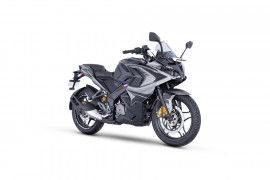 Bajaj Pulsar RS200
Bajaj Pulsar RS200
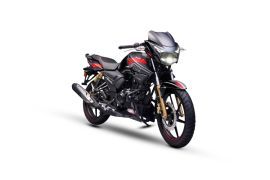 TVS Apache RTR 180
TVS Apache RTR 180
 Yamaha FZ 25
Yamaha FZ 25
 TVS Apache RTR 160 4V
TVS Apache RTR 160 4V
India's largest automotive community